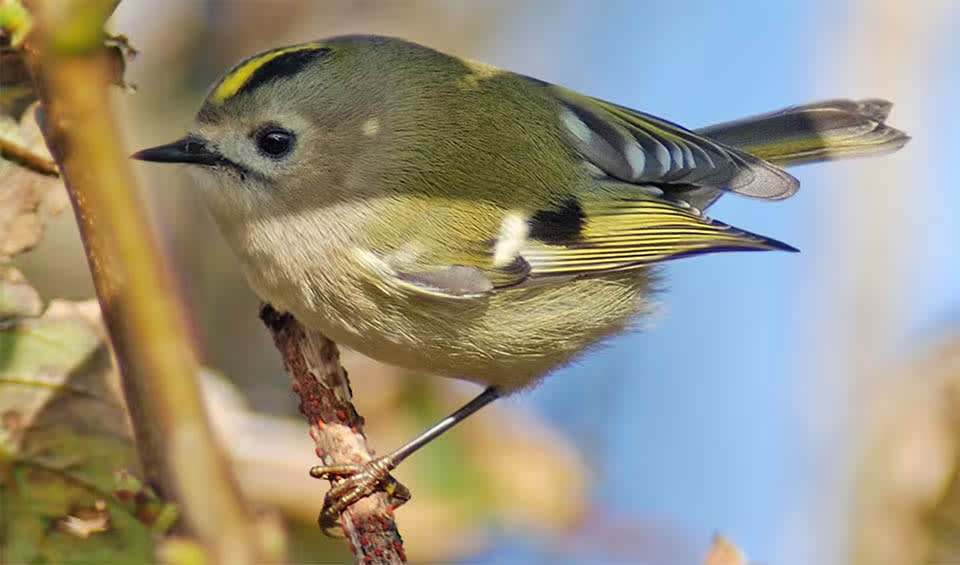Regulus – Kinglets
Some of the smallest birds you can find!
The genus Regulus, commonly known as kinglets, includes some of the smallest and most lively birds found primarily in the Northern Hemisphere. This genus comprises several species, with the goldcrest and the ruby-crowned kinglet being the most widely recognized. These birds are tiny, even smaller than sparrows, yet they are known for their vibrant energy and constant movement.
Kinglets are characterized by their fine, pointed bills and short wings, which aid in their acrobatic flying and foraging abilities. They have soft, olive-green to gray plumage that helps them blend into their surroundings, a useful trait for evading predators. However, the striking colors on their heads truly set them apart. For example, the goldcrest, Europe’s smallest bird, sports a brilliant gold stripe on its head, while the ruby-crowned kinglet, found in North America, features a vivid ruby-red patch, which is often only visible when the bird is excited or agitated.
These birds inhabit coniferous forests and woodlands, where they are often seen flitting energetically from tree to tree in search of insects and spiders. Their diet consists mainly of these small invertebrates, which adeptly pick off leaves and branches with their sharp beaks. Kinglets are particularly adept at foraging in colder weather, a trait that is crucial for their survival through harsh winters, especially in the more northern parts of their range.
The vocalizations of kinglets are another notable feature. Despite their size, kinglets produce a surprisingly loud and complex song, a series of high-pitched notes that can be heard throughout their habitat. This singing plays a crucial role during mating seasons and in marking their territories, showcasing how such tiny creatures can make a big impact on their environment through sound.
Species in this genus
Goldcrest
A tiny bird, one of the smallest in fact!


